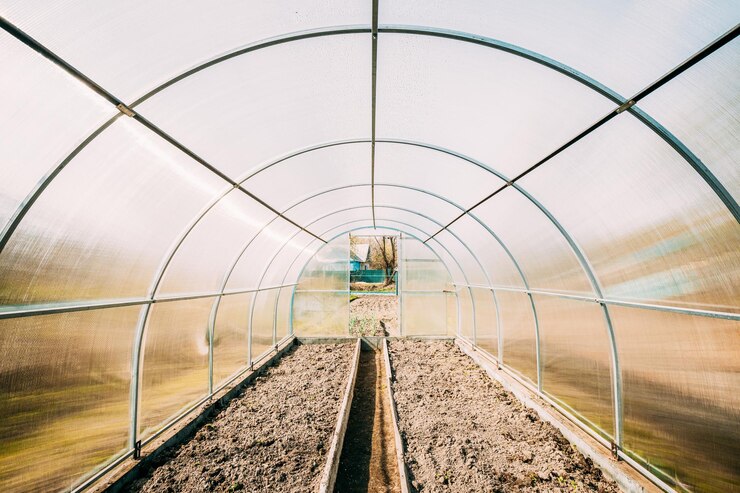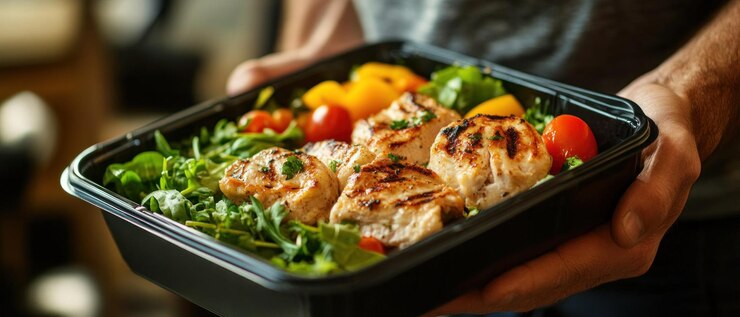Greenhouse Plastic Options for Hobbyists and Farmers

Strong 8k brings an ultra-HD IPTV experience to your living room and your pocket.
Whether you're a backyard gardener or managing a small farm, extending your growing season is often at the top of your wish list. One of the most cost effective ways to do that is by using greenhouse plastic. But with so many options out there, how do you know which type is right for your setup? From frost cover for plants to heavy duty UV resistant sheets, the choices can feel overwhelming.
Why Greenhouse Plastic Matters
At its core, greenhouse plastic creates a microclimate that allows plants to thrive when external conditions are less than ideal. Unlike glass greenhouses, plastic covered structures are affordable, lightweight, and adaptable to different climates. Plus, the right frost cover for plants can make all the difference when a cold snap hits unexpectedly.
But here’s the thing: not all greenhouse plastic is created equal. Choosing the wrong type can lead to poor light transmission, rapid wear and tear, or worse plants that don't survive the season.
Key Types of Greenhouse Plastic
Let’s dive into the main types of greenhouse plastic available today, each offering unique benefits.
Polyethylene Film
Polyethylene film is by far the most popular choice for hobbyists and small scale farmers. It’s flexible, affordable, and available in both single and double layers.
Pros:
Excellent light diffusion
Inexpensive and easy to install
Available in UV-stabilized versions
Cons:
Typically lasts 2-4 years
Can tear easily if not handled with care
For anyone needing a reliable frost cover for plants during the winter, a double layer polyethylene setup with air inflation between the layers provides extra insulation keeping temperatures stable even when it dips below freezing.
Polycarbonate Panels
If you’re looking for something a bit sturdier, polycarbonate panels are worth considering. These rigid sheets offer superior durability and can last up to 10 years or more.
Pros:
High impact resistance
Excellent thermal insulation
Long lifespan
Cons:
Higher upfront cost
Requires a solid frame for installation
Polycarbonate is a great long term investment for farmers who want a low maintenance solution. It also acts as an effective frost cover for plants, offering excellent protection from harsh weather and hail.
EVA (Ethylene Vinyl Acetate) Film
EVA is a bit of an under the radar option but is gaining popularity due to its excellent performance characteristics.
Pros:
Superior light transmission
Anti drip and anti fog properties
Better thermal retention than standard polyethylene
Cons:
Higher price point
Slightly less available in standard hardware stores
For those growing sensitive crops that need steady light and warmth, EVA film is a premium greenhouse plastic option worth every penny.
Factors to Consider When Choosing Greenhouse Plastic
Before you make a purchase, it's important to weigh a few key factors:
Durability
Think about how long you want your greenhouse plastic to last. If you’re okay with replacing it every couple of years, polyethylene is perfectly fine. But if you want a set it and forget it option, polycarbonate might be your best bet.
Light Transmission
Not all plants need the same amount of light. Leafy greens like spinach and lettuce can handle a bit less, while fruiting crops like tomatoes and peppers crave as much light as possible. Make sure the greenhouse plastic you choose offers the right balance of clarity and diffusion.
Insulation
If you’re in a colder climate, insulation is non negotiable. Look for greenhouse plastic with added thermal properties or consider using an additional frost cover for plants inside the structure to provide double the protection.
Budget
Let’s be real budget often plays a big role. Luckily, you don’t have to break the bank to protect your plants. Even basic polyethylene film, when properly maintained, can deliver excellent results for hobbyists and small scale growers.
Tips for Maximizing the Lifespan of Your Greenhouse Plastic
Choose UV-stabilized products: Regular plastic sheeting can degrade quickly in sunlight. Always opt for greenhouse plastic labeled UV-stabilized to get the most bang for your buck.
Keep it taut: Loose plastic flaps around in the wind, which can cause tears. Make sure your plastic is stretched tight over the frame and secured properly.
Inspect regularly: Check for any rips, holes, or weak spots, especially after storms. A quick repair using greenhouse repair tape can prevent minor issues from becoming major headaches.
Clean it gently: Dust and algae can block valuable sunlight. Clean your greenhouse plastic at least twice a year with mild soap and water no harsh chemicals needed.
Do You Need Additional Frost Cover for Plants?
In especially cold regions, greenhouse plastic alone might not be enough. This is where secondary frost cover for plants such as floating row covers or fleece blankets can come in handy. These can be draped directly over your crops inside the greenhouse to add another layer of warmth when the mercury really drops.
Final Thoughts
Choosing the right greenhouse plastic is about balancing durability, light needs, insulation, and budget. Whether you’re a weekend hobbyist or a full time farmer, investing in quality greenhouse plastic and using frost cover for plants as needed will pay off in healthier, more resilient crops.
Remember, the right setup not only extends your growing season but also gives you peace of mind, knowing your plants are protected from whatever Mother Nature throws their way. So take your time, do your homework, and pick the greenhouse plastic that best fits your growing goals. Happy gardening!
Note: IndiBlogHub features both user-submitted and editorial content. We do not verify third-party contributions. Read our Disclaimer and Privacy Policyfor details.



